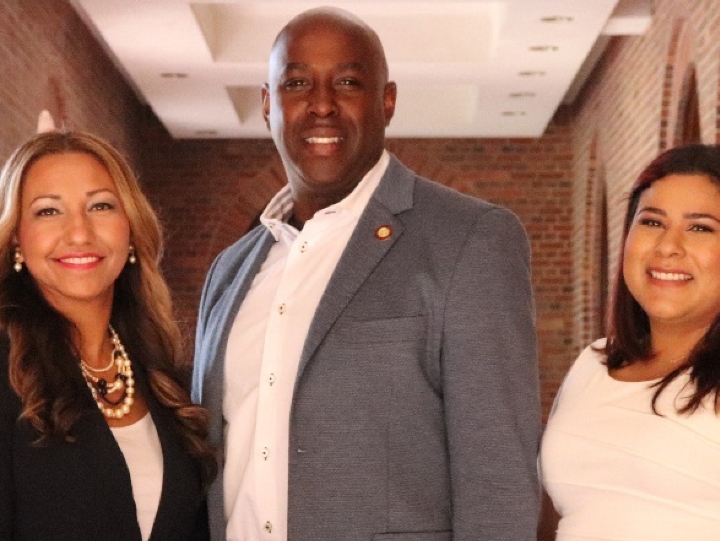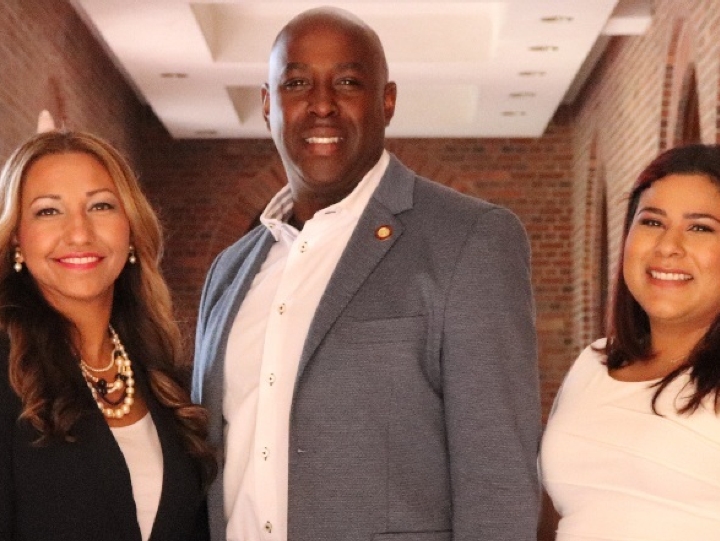
How Can Higher Education Institutions Better Equip College Student Peers to Engage With Diverse Populations More Effectively? Critical Conversations #26
Equity, Inclusion and Social Justice Equity, Inclusion, and Social Justice Division Spirituality and Religion in Higher Education Faculty Graduate Mid-Level New Professional Senior Level Undergraduate
August 24, 2021
JCC Connexions, Vol. 7, No. 3, August 2021
JCC published a series of articles in the past months on Religious Identity Groups on Campus with Shafiqa Ahmadi and Darnell Cole as guest editors and Mabel E. Sanchez as another one of the authors. The articles were
- Examining Muslim Student Experiences With Campus Insensitivity, Coercion, and Negative Interworldview Engagement by Darnell Cole,Shafiqa Ahmadi, and Mabel E. Sanchez;
- Negotiating Intersectional Identities in a Christian Student Organization by Mabel E. Sanchez;
- Understanding Muslim College Students’ Sense of Belonging and Mattering at HBCUs by Darnell Cole; and
- Targeted and Omitted: Institutional Role of Protecting Minoritized Religious Groups Against Hate Crimes by Shafiqa Ahmadi, Jacob Boarnet, Brandon Garcia, and Milie Majumder.
Shafiqa, Darnell, and Mabel are this quarter's JCC Connexions Focus Authors, and they recently responded to questions from Jon Dalton, JCC co-editor:about their research.
1. What are some of the ways in which the organizational and structural aspects of collegiate institutions create for minority students the perception of insensitivity and coercion?
 Campuses that have a commitment to diversity and openness to people who identify with different worldviews often report climates that promote learning about other cultures and worldviews. When campuses do not have such commitment both inside and outside the classroom, minority students may feel that they are not supported and perceive more insensitivity and coercion as there is a lack of understanding and willingness to learn about their identities and practices.
Campuses that have a commitment to diversity and openness to people who identify with different worldviews often report climates that promote learning about other cultures and worldviews. When campuses do not have such commitment both inside and outside the classroom, minority students may feel that they are not supported and perceive more insensitivity and coercion as there is a lack of understanding and willingness to learn about their identities and practices.
On the other hand, on campuses that have structures in place to promote an environment where there is more collaboration and education regarding minority faith groups, students report more insensitivity and coercion from their peers. At first glance, this can seem like something undesirable for colleges. However, this often indicates that students feel more comfortable reporting such incidents and experiences because there is space and support to voice their concerns.
2. How can higher education institutions better equip college student peers and peer groups to interact and include diverse populations more effectively?
Higher education institutions first need to ask themselves about their diversity and inclusion goals and how peer groups fit (if at all) into the process of obtaining these goals and objectives. If peer groups are not a part of the master plan for diversity and inclusion at universities then it becomes more difficult for them to also adopt diversity and inclusive language and practices when they have little guidance and oversight from the institution.
Higher education institutions need to provide education and training for students regarding inclusion. Student group leaders often have contact with university staff, but the rest of the student members do not. Student leaders may be the ones attending campus-wide training as their organization’s representative, but the messages from the training may not get to the other student members. The responsibility of training other students on diversity and inclusion falls on student leaders instead of the institution. Additionally, institutions offer little to no incentive to extend the training and many do not have a system of verifying that the information and training is actually implemented among peer groups.
Education on diversity and inclusion needs to happen in multiple places across the university and not just for a particular set of students. Training and education should not be limited to a once a semester event, for one class, or as a reactive response, but should rather be tangible efforts that the whole institution is working towards, modeling for each other what it means to include diverse populations.
We have five recommendations for institutions and staff:
- Provide training for all students, especially those involved in extracurricular activities, and not just limit the training to leaders within these peer groups
- Embed diversity and inclusion efforts throughout the campus inside and outside the classrooms because it takes a collective effort, not just coming from diversity appointed staff and programs or from student leaders
- Hold trainings and education programs throughout the year and not just as a requirement for student organization recognition or as a “teaching tool” after incidents
- Often, student leaders of peer groups will have some degree of contact with a staff member to keep their organization functioning. We recommend that the staff-student contact and connection increases and includes students that are not leaders.
- Have innovative and engaging diversity and inclusion educational programs available that move beyond online modules
3. Has the prevalence of hate crimes directed against minority religious groups on campuses increased in recent years?
According to FBI Uniform Crime Reports (UCR, 2015-2019) religious motivated hate crime offenses (a single incident may include multiple offenses) increased exponentially during the Trump presidency, and particularly during the 2016 election.Within the same five-year period, UCR data show that the incidence of hate crimes aimed at Muslim individuals grew from 257 incidents in 2015 to 307 incidents in 2016. Similarly, anti-Jewish incidents increased from 684 in 2016 to 938 in 2017. The number of offenses and incidents against Muslim, Sikh, and Jewish groups peaked from 2016–2018. A noteworthy limitation of UCR is that religion-related hate crimes categorized as anti-Sikh were only added in 2015. The US Goverment Accountability Office (GAO) examines the prevalence of hate crimes, noting US Department of Education’s (DOE) findings that religious-based hate crimes in institutions of higher education reported to the US Department of Justice (DOJ) by religion from 2009–2017 increased for anti-Jewish and anti-Muslim crimes.
Three recommendations:
- The hate crime reports from the FBI UCR and DOE GAO all utilize different terminology for categorizing their data. We recommend federal agencies adopt the same terminology to ensure a more centralized and clear reporting process for victims. Consolidating definitions would increase the consistency in data collection.
- Reporting of hate crime statistics is often either inconsistent or delayed. We recommend that reports be published more frequently and federal agencies should either expedite their reporting system or consider the addition of a progress-report to disseminate statistics sooner.
- Currently, FBI UCR and DOE GAO do not indicate how intersectional identities have contributed to hate crime incidents and offenses. We recommend federal agencies incorporate a method of disaggregation for multiple-bias incidents.
4. Why is it important for faculty and administrators to show active personal support for Muslim students’ sense of belonging and acceptance?
Faculty and administrators play a crucial role in students’ lives in college as they are often seen as leaders. When it comes to Muslim students, it is especially important that faculty and administrators show an active and personal support for Muslim students’ sense of belonging and acceptance, because they are not only communicating to Muslim students that they are important, but they are also showing other students that Muslim students are an integral part of the campus.
Recommendations for faculty and administrators:
- Whenever possible and appropriate, include literature regarding Muslims, especially by Muslim authors in the curriculum.
- Be mindful and accommodating around Muslim religious holidays and traditions. Make it known to students that these options exist at the beginning of the semester and consider adding these holidays to the calendar. Ask students to identify any other holidays or special days that should be kept in mind to help students throughout the semester.
- Offer students alternate due dates, exam dates, and assignments whenever they communicate a religious conflict, it can make students feel supported.
- Whenever stereotypes and misconceptions occur address them as best as possible, without asking Muslim students to educate their peers, especially after being targeted.